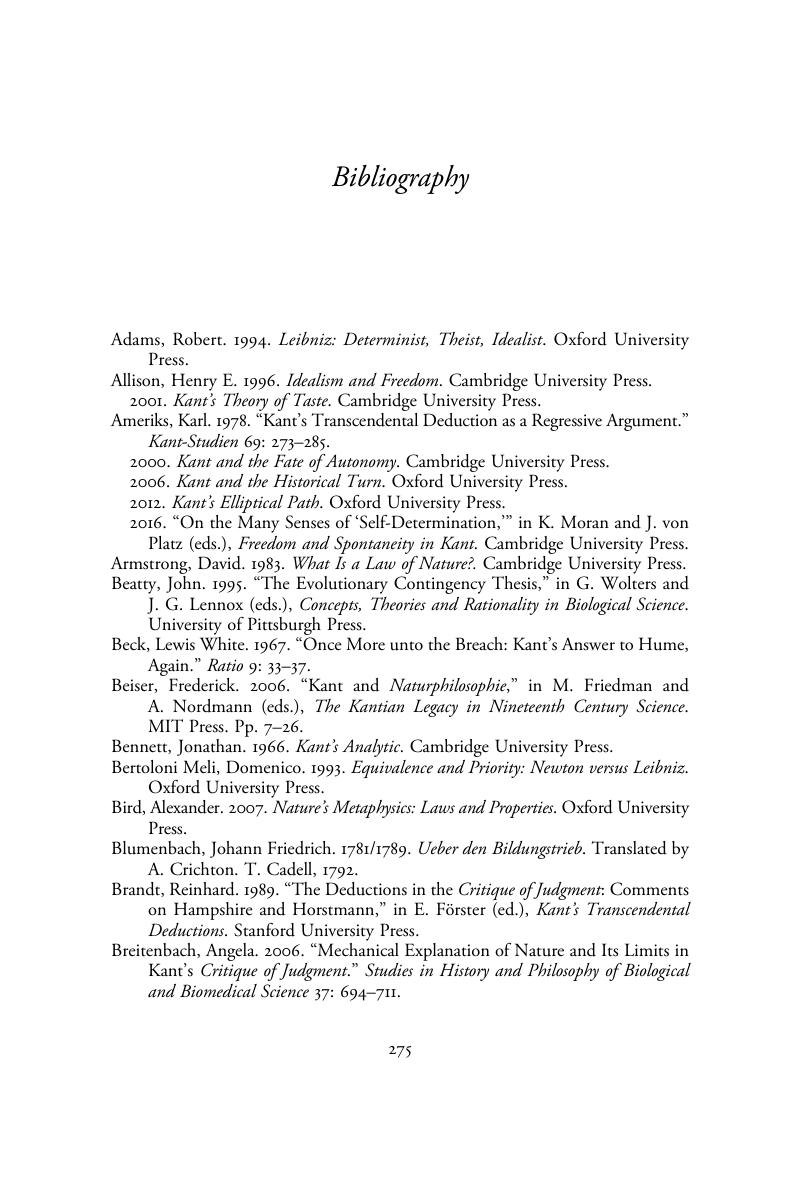Book contents
- Kant and the Laws of Nature
- Kant and the Laws of Nature
- Copyright page
- Contents
- Contributors
- Note on Texts and Translations
- Abbreviations of Kant’s Works
- Acknowledgments
- Introduction
- Part I The Lawfulness of Nature
- Part II The Systematicity of Nature
- Part III Nomic Necessity and the Metaphysics of Nature
- Part IV Laws in Physics
- Part V Laws in Biology
- Bibliography
- Index
- References
Bibliography
Published online by Cambridge University Press: 31 March 2017
- Kant and the Laws of Nature
- Kant and the Laws of Nature
- Copyright page
- Contents
- Contributors
- Note on Texts and Translations
- Abbreviations of Kant’s Works
- Acknowledgments
- Introduction
- Part I The Lawfulness of Nature
- Part II The Systematicity of Nature
- Part III Nomic Necessity and the Metaphysics of Nature
- Part IV Laws in Physics
- Part V Laws in Biology
- Bibliography
- Index
- References
Summary

- Type
- Chapter
- Information
- Kant and the Laws of Nature , pp. 275 - 284Publisher: Cambridge University PressPrint publication year: 2017



